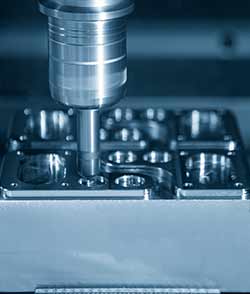Demystifying Milling Machine Structure: A Closer Look at its Components
Milling machines are the workhorses of precision machining, enabling the creation of intricate parts and components across various industries. Behind their capability lies a complex and well-engineered structure that facilitates precise material removal. In this article, we delve into the milling machine structure, exploring their essential components and the role they play in achieving accuracy and versatility.
The Foundation: Base and Column
At the core of every milling machine is its base and column. The base provides stability and support, ensuring that the machine remains rigid during operation. The column, often vertically oriented, serves as the backbone that supports the moving components and the spindle. The rigidity of the base and column is crucial for maintaining precise cutting movements.
Guiding the Way: Knee, Saddle, and Table
Milling machines feature a movable table that holds the workpiece and moves in the X and Y directions. The saddle is mounted on the knee, allowing the table to move along the Z-axis. The knee can be adjusted vertically, enabling the table to be positioned at different heights. These components work in tandem to guide the workpiece and the cutting tool, allowing for precise material removal and various machining operations.
The Heart of Machining: Spindle and Toolholder
The spindle is the heart of the milling machine, responsible for rotating the cutting tool at high speeds. It's typically driven by a motor and is equipped with a toolholder that securely holds the cutting tool. The toolholder ensures accurate tool positioning and minimizes vibrations, which are crucial for achieving precise cuts and surface finishes.
Power and Precision: Drive Mechanisms
Milling machines employ various drive mechanisms to move the table, saddle, and knee. These mechanisms can include lead screws, ball screws, and linear guides. The choice of drive mechanism impacts the machine's accuracy, speed, and overall performance. Modern machines often incorporate CNC (Computer Numerical Control) systems that precisely control these mechanisms, enabling automated and highly accurate machining.
Versatility in Action: Rotating Head and Tool Changer
Some milling machines offer enhanced versatility through a rotating head or spindle. This feature allows the cutting tool to be positioned at different angles, enabling complex machining operations and the creation of intricate geometries. Additionally, advanced machines may feature automatic tool changers, allowing for seamless tool swaps during a machining process, further enhancing efficiency and reducing downtime.
The milling machine structure is a harmonious assembly of components, each playing a vital role in achieving precision, versatility, and efficiency in machining operations. From the base and column providing stability to the spindle and toolholder ensuring accurate material removal, every element contributes to the overall performance of the machine. Understanding the intricate interplay of these components helps manufacturers harness the full potential of milling machines, turning raw materials into finely crafted components that power various industries.
-

Influence of Foundation on CNC Machining Center
CNC machining center is a kind of high precision machine tool, the machining accuracy is required to be within 1 wire. Before the CNC lathe manufacturer has finished the inspection and delivered to th... -

Ai -Creation? Manufacture? Where Should The Development Of Machine Tool Industry Go In The Future?
industry from January to September decreased by 5.2% year-on-year, and that of measuring tool and meter industry from January to September increased by 2.3% year-on-year. China's machine tool indu... -

The Principle of CNC Turning Lathe Tool Setting
Ⅰ. The principle of CNC turning lathe tool settingI believe that everyone is already familiar with the "knife setting" in CNC turning lathe, but few people will "deeply study" the...





